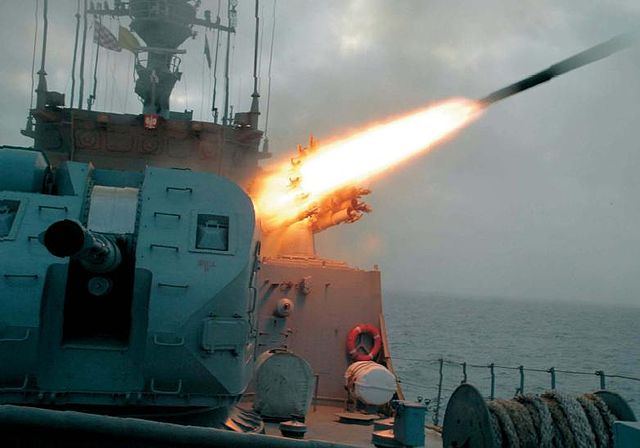Top Qs
Timeline
Chat
Perspective
Anti-submarine rocket
Naval weapon type for launching small depth charges against submarines From Wikipedia, the free encyclopedia
Remove ads
An anti-submarine rocket is an anti-submarine weapon type deployed on surface warships for the purpose of sinking or damaging submarines by small explosive charges. They are similar to anti-submarine mortar but a comparably more modern system. This type of weapon used rockets instead of spigot mortars to deliver the explosive.[1]

Remove ads
History
Summarize
Perspective

From World War I submarines posed a major threat to surface ships which necessitated the development of effective anti-submarine weapons. During World War II, The US developed the first anti-submarine rocket Mousetrap to replace the Hedgehog anti-submarine mortar.[2] Both had the common characteristic of throwing multiple depth charges ahead of the attacking vessel, while it was still in sonar contact. After World War II several other countries developed anti-submarine rocket systems. The U.S. developed another system named RUR-4 Weapon Alpha.[3] Norway developed the Terne. The Bofors 375 mm anti-submarine rocket was developed in the 1950s by Sweden.[4] It had two or four barrels and fired a 550-pound (250 kg) projectile up to 3,800 yards (3,500 m). Due to the poor sonar conditions of the Baltic Sea, mortars, and rocket and missile launchers still retain a place next to torpedoes. The USSR developed its own anti-submarine rockets in the RBU series and these are still in use in Russia.[1][5][6] China also developed multiple types of anti-submarine rocket system.[7] In 2015, Turkish company Roketsan unveiled Roketsan ASW rocket launcher system.[8] These systems have also been exported to multiple countries.
Remove ads
Uses

The homing torpedo and anti-submarine missiles have largely take the anti-submarine role, although anti-submarine rockets still used as secondary anti-submarine weapon by larger ships and primary anti-submarine weapon by small ships by several nations.[9][1][8] Compared to the anti-submarine torpedo and missile, range of the anti-submarine rocket is short. The former Soviet Navy (and by extension, the Russian Navy) is the largest user of anti-submarine rockets. Keeping with the Soviet idea that weapons should be simple and cheap, several versions of anti-submarine rockets were developed. Trials were also conducted on destroying oncoming torpedoes with anti-submarine mortars. The most common is the RBU-6000, which fires twelve 160-pound (73 kg) projectiles in a horseshoe pattern up to 6,500 yards (5,900 m) away.[5]
Remove ads
List of anti-submarine rockets

- Mousetrap 183 mm
- RUR-4 Weapon Alpha 324 mm
References
Bibliography
Wikiwand - on
Seamless Wikipedia browsing. On steroids.
Remove ads
